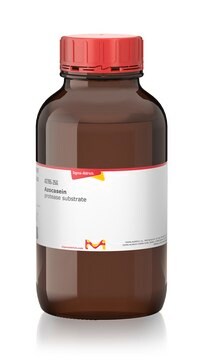D0690
DNA Gyrase from Escherichia coli
aqueous glycerol solution
About This Item
Produits recommandés
Source biologique
Escherichia coli
Niveau de qualité
Forme
aqueous glycerol solution
Poids mol.
~374 kDa
Concentration
≥2 unit/μL
Technique(s)
cell based assay: suitable
Application(s)
cell analysis
Conditions d'expédition
dry ice
Température de stockage
−70°C
Informations sur le gène
Escherichia coli K12 ... gyrA(946614) , gyrB(948211)
Application
Actions biochimiques/physiologiques
Définition de l'unité
Autres remarques
Code de la classe de stockage
10 - Combustible liquids
Classe de danger pour l'eau (WGK)
WGK 1
Point d'éclair (°F)
Not applicable
Point d'éclair (°C)
Not applicable
Certificats d'analyse (COA)
Recherchez un Certificats d'analyse (COA) en saisissant le numéro de lot du produit. Les numéros de lot figurent sur l'étiquette du produit après les mots "Lot" ou "Batch".
Déjà en possession de ce produit ?
Retrouvez la documentation relative aux produits que vous avez récemment achetés dans la Bibliothèque de documents.
Notre équipe de scientifiques dispose d'une expérience dans tous les secteurs de la recherche, notamment en sciences de la vie, science des matériaux, synthèse chimique, chromatographie, analyse et dans de nombreux autres domaines..
Contacter notre Service technique